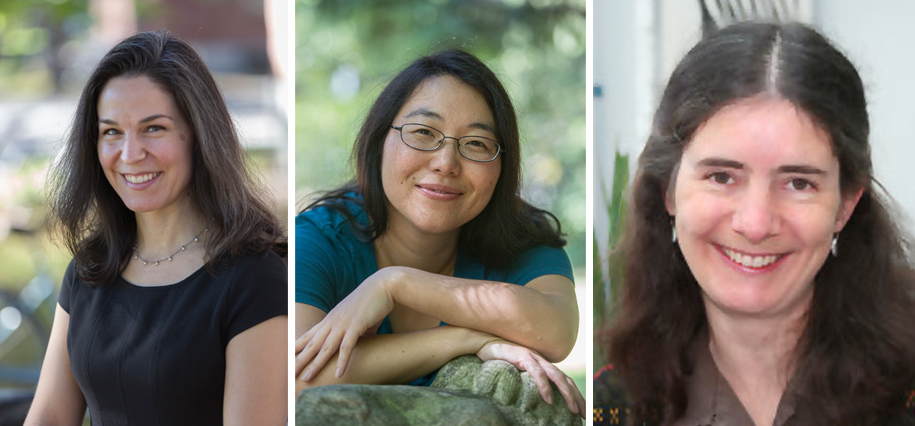Science Faculty See Pros and Cons of Avoiding Traditional Publication Route
By Tom Porter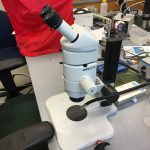
Across the US, a growing number of science professors, particularly in the field of biology, are publishing their work straight to the Internet: an approach that bypasses the often lengthy peer-review process that precedes publication in traditional subscription-based academic journals such as Science, Nature, and Cell.
According to an article published earlier this year in The New York Times, some biologists have started publishing their work on a publicly accessible website called bioRXiv (pronounced “bioarchive”), before submitting it to a scholarly journal for “official” publication. These “preprint” publications, as they’re called, represent the response of a increasing number of academics frustrated at the slowness of the traditional route, and who are eager to get their research out there in the public eye.
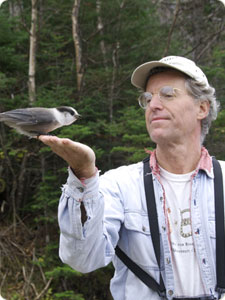
And they have a point, said Nathaniel Wheelwright, the Anne T. and Robert M. Bass Professor of Natural Sciences at Bowdoin. “All of my colleagues and I are intensely familiar with the delay in publishing,” he said. “It’s not at all unusual to complete a manuscript, submit it to a peer-reviewed journal for publication, have it rejected four months later, revise and resubmit it to a second (usually lower tier) journal, have that rejected after review, argue with the editor and reviewers, maybe get it accepted (or not), then wait six months for galley proofs, then another before it appears. Oh, and then have to pay page charges.”
But, Wheelwright went on to point out that there is still a lot to be said for the traditional publishing route. “The process of reviewing and revising almost always improves papers, at least in my experience. I would expect a huge amount of stuff not worth reading to appear in preprints, particularly given how busy modern life is. I don’t mind waiting to read something a year or two later as long as I can be pretty sure it’s true.”
A Two-Sided Argument
Several faculty members seem to share Wheelwright’s appreciation of both sides of the argument. Linnean Professor of Biology and Biochemistry Bruce Kohorn said, “Most scientists do not have the luxury of publishing directly on the Internet given the likelihood of being scooped, or not getting appropriate recognition for their work from funding agencies and universities.” But, he continued, “having said that, it is clear that most scientists are frustrated by the pricing system of publishing and also by the peer review system and its vagaries.”
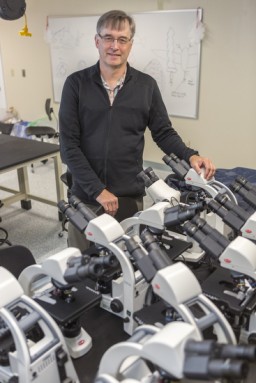
Associate Professor of Biology Dave Carlon agreed the frustration is out there, but said the situation is improving, thanks partly to complaints, and partly to the influence of electronic media on the speed of publishing. All major subscription-based science journals that appear in print are also published digitally (albeit behind a pay wall). But, Carlon stressed, “a number of electronic-only journals have sprung up in recent years and unlike the preprint option, these do undergo the peer review process.” These types of journals, Carlon explained, are turning manuscripts around much more quickly, and pushing reviewers to speed up, too. “But,” he added, “the review systems in many of these electronic-only journals is sometimes not as thorough as they are in print.”
Carlon cited an investigation by the journal Science, which looked at a number of papers that were incorrect or had bad science, comparing electronic only, non-subscription journals with print ones: it concluded that open access e-journals contained more material that was incorrect and had not been vetted properly. “Someone even wrote a false paper to see who would reject it and who would publish it. Electronic-only journals accepted the false paper at a higher rate.” In the biomedical sphere, said Carlon, there is even more competition on the speed of publication, “because a lot of people are working on the same thing, and the stakes are high with the pharmaceutical industry wanting results. Another problem is that you might be in a grant cycle and will need show a result before you can submit a grant.” All this, he said, has to be weighed against “the risk of doing yourself more harm than good if the article you publish turns out bad.”

A Warning to Younger Faculty
While these new approaches to publishing are valid, said Assistant Professor of Biology Vladimir Douhovnikoff, they ironically do not tend to work in favor of junior, untenured, faculty. “It’s ironic,” he said, “because junior faculty members are typically more tech-savvy than their older colleagues and therefore more inclined to take advantage of new technology to get their work published. But this can be risky.” And that, he explained, is because younger professors are still building their reputations and cannot risk jeopardizing their work’s impact by publishing research on a platform where it might not receive full recognition. “Conversely,” he said, “senior, tenured, faculty members, with well-established reputations, can afford to take such risks.”
Douhovnikoff urged caution about moving too quickly away from the traditional publishing route: “You can be revolutionary; that’s great, but to have the right stuff percolate to the top is a challenge. Take Charles Darwin, for example: he took almost his whole life to publish his most important work, because he wanted his argument to be as thorough and as strong as possible, otherwise he knew it would be so much harder to have his work accepted down the road.” The good science of today, he stressed, is built on earlier good science, “and we have to trust that earlier science was done properly.”

Physics Professors Welcome Preprint Route
There is a markedly different culture among physicists, where the preprint option is much more widely accepted. “In fact,” said physics and astronomy professor Stephen Naculich, the LaCasce Family Professor of Natural Sciences, “I would say the preprint route plays a crucial role, and if anything, the controversy in my field would be about whether the traditional publication route remains relevant!” Naculich said theoretical high energy physicists have been making their work available to colleagues via the Internet prior to publication for almost twenty-five years now. “In 1991,” he said, “a Cornell physicist named Paul Ginsparg, who was then working at the Los Alamos National Laboratory, established the arXiv, a preprint archive, for the free uploading and downloading of academic papers.”
Before the Internet, said Naculich, physicists circulated their work ahead of publication by making photocopies of their papers, also known as preprints, and mailing them to all the major research universities for other scientists to view, “When I was a grad student in the 1980s, we would make daily trips to the preprint library to see what was new.” But, stressed Naculich, this does not mean that he or any of his colleagues reject the peer-review process. “Then and now, physicists also submitted their work to journals to undergo peer review, which was, and remains, important for getting jobs and promotions. However the preprint system means that information is circulated much more quickly and is not delayed by the peer-review process.” For example, Naculich pointed out that his latest paper—BCJ relations from a new symmetry of gauge-theory amplitudes —has just been submitted to the arXiv. He said he will submit the article to a refereed journal in a week or so, “after I see if I get any feedback from the e-print.”
There is some variation in the use of the arXiv across the physics community however. Madeleine Msall is a solid state physicist, who makes experimental measurements of the properties of materials used to build electronic devices, like computer components and astronomical sensors. Her work and the work of theorists like Naculich, who studies elementary particles and string theory, rarely overlap, she said. They also have differing attitudes to the speed with which their work is disseminated. “Solid state physicists generally hold back their preprint publication,” said, “and release it simultaneously with the publication of the work in a refereed journal, or at least wait for a paper to be accepted before releasing it as an arXiv.”
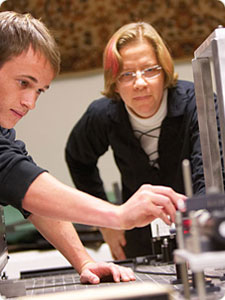
Msall’s latest paper, for example — Acoustic Measurements of the Stripe and the Bubble Quantum Hall Phases — was published simultaneously on the arXiv and in the New Journal of Physics, an online, peer reviewed, open access journal published by the Institute of Physics, “which has a long and distinguished record of producing excellent print journals.” Msall said she chose this publication route because it ensured the widest possible access and audience for her work, which at the end of the day is what most academic scholars want.



